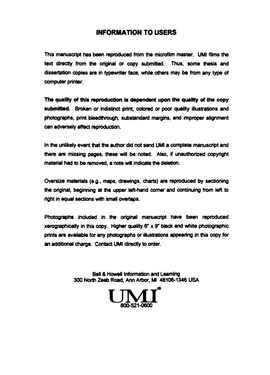| dc.contributor.advisor | Davis, Gwenn, | en_US |
| dc.contributor.author | Cosby, Susan G. | en_US |
| dc.date.accessioned | 2013-08-16T12:30:50Z | |
| dc.date.available | 2013-08-16T12:30:50Z | |
| dc.date.issued | 2000 | en_US |
| dc.identifier.uri | https://hdl.handle.net/11244/5929 | |
| dc.description.abstract | The first chapter deals with studies of madness and gender, referring to Robert Burton's The Anatomy of Melancholy as well as Erik Midelfort's and Michael MacDonald's analyses of mental illness during the Renaissance. This chapter also establishes a theoretical framework for the study of gender and madness, examining the scholarship of Carol Thomas Neely, Elaine Showalter, Phyllis Chesler, and Michel Foucault. The second chapter explores how the theater, an important vehicle for dissemination and confirmation of popular notions of madness, presents madwomen in a fairly consistent manner, particularly in Webster's The White Devil and The Duchess of Malfi. The third chapter examines the way women writers of prose fiction indicate a shift in the association of women with disorder, presenting women as the source of social order and the keepers of it. Mary Wroth's Urania presents an ambivalent portrait of women's madness, while Margaret Cavendish's New Blazing World subverts prevailing ideas about gender roles, melancholy, and madness. The final chapter centers on spiritual autobiographies of the religious mystics, women who were often defined as mad. This chapter focuses on the mystics Elizabeth Barton, "the nun of Kent" and Lady Eleanor Davies, the composer of over 50 religious tracts concerning her visions. For these women prophets, men's chaos can be corrected only if their male audiences acknowledge the truth of the divine message these women offer. | en_US |
| dc.description.abstract | The dissertation considers the marginalization of mad persons and women in literary representations. Being labeled "mad" or claiming holy madness placed women in a dangerous position. Male authority figures used the cultural stigma of madness to silence, confine, or dismiss unruly women, but women writers and prophets of the early modern period began to manipulate their association with madness as a means of negotiating a place from which to speak. The emphasis on self-control, public displays, and alienation provided special challenges for women writers in this negotiation. Masculine anxiety about women's potential for disrupting established authority is visible in public representations of mad women. | en_US |
| dc.format.extent | v, 261 leaves ; | en_US |
| dc.subject | Women and literature England History. | en_US |
| dc.subject | Mental illness in literature. | en_US |
| dc.subject | Literature and mental illness England History. | en_US |
| dc.subject | Literature, English. | en_US |
| dc.subject | Women's Studies. | en_US |
| dc.title | Resisting madness: Women's negotiation of social control in early modern English literature. | en_US |
| dc.type | Thesis | en_US |
| dc.thesis.degree | Ph.D. | en_US |
| dc.thesis.degreeDiscipline | Department of English | en_US |
| dc.note | Source: Dissertation Abstracts International, Volume: 61-02, Section: A, page: 0617. | en_US |
| dc.note | Director: Gwenn Davis. | en_US |
| ou.identifier | (UMI)AAI9962958 | en_US |
| ou.group | College of Arts and Sciences::Department of English | |
